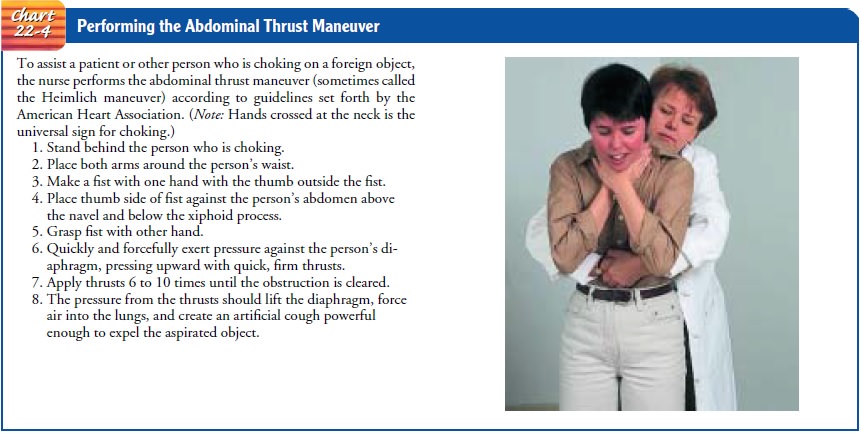Chapter: Medical Surgical Nursing: Management of Patients With Upper Respiratory Tract Disorders
Laryngeal Obstruction - Upper Respiratory Airway
LARYNGEAL OBSTRUCTION
Edema
of the larynx is a serious, often fatal, condition. The lar-ynx is a stiff box
that will not stretch. It contains a narrow space between the vocal cords
(glottis) through which air must pass. Swelling of the laryngeal mucous
membranes, therefore, may close off the opening tightly, leading to
suffocation. Edema of the glot-tis occurs rarely in patients with acute laryngitis,
occasionally in patients with urticaria, and more frequently in patients with
se-vere inflammations of the throat, as in scarlet fever. It is an occa-sional
cause of death in severe anaphylaxis (angioneurotic edema).
Foreign
bodies frequently are aspirated into the pharynx, the larynx, or the trachea
and cause a twofold problem. First, they obstruct the air passages and cause
difficulty in breathing, which may lead to asphyxia; later, they may be drawn
farther down, entering the bronchi or a bronchial branch and causing symp-toms
of irritation, such as a croupy cough, expectoration of blood or mucus, or
labored breathing. The physical signs and x-ray find-ings confirm the
diagnosis.
Medical Management
When
the obstruction is caused by edema resulting from an al-lergic reaction,
treatment includes administering subcutaneous epinephrine or a corticosteroid
and applying an ice pack to the neck. In emergencies caused by obstruction by a
foreign body, when signs of asphyxia are apparent, immediate treatment is
necessary. Frequently, if the foreign body has lodged in the pharynx and can be
visualized, the finger can dislodge it.
If
the obstruction is in the larynx or the trachea, the nurse or other rescuer
tries the subdiaphragmatic abdominal thrust maneuver (Chart 22-4). If all
efforts are unsuccessful, an im-mediate tracheotomy is necessary.

Related Topics